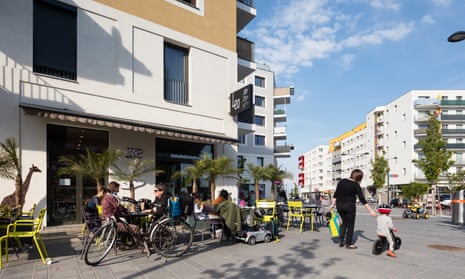At 240 hectares, the neighbourhood of Aspern, Vienna, is one of the largest urban developments in Europe. By the time it is complete in 2028, it is due to be home to 20,000 people, plus another 20,000 workplaces, and with an explicitly family-oriented design. Centred on an artificial lake and with half of the entire area devoted to public space, it is billed as “Vienna’s Urban Lakeside”: a model city-within-a-city, in a place that already has the one of the highest qualities of life of any city in the world.
When Christina Atta moved to Aspern four years ago, she was one of its rare single women. “I was alone with my cats, and everybody had children,” she says. Now she is pregnant with her second child, however, Atta, 35, can better appreciate its design. Her only complaint is that the bus to the city can’t accommodate all the young children.
But Aspern isn’t just about families. It was deliberately planned with a brand identity, one that might elsewhere be considered political: all the streets and public spaces are named for women.
There are Hannah Arendt Platz, Janis Joplin Promenade, Ada Lovelace Strasse, Madame d’Ora Park and more, chosen by 30 experts. As an official brochure setting out these women’s achievements puts it, “Aspern has a female face” – a small counter to traditional Vienna, where 3,750 streets are named after men.
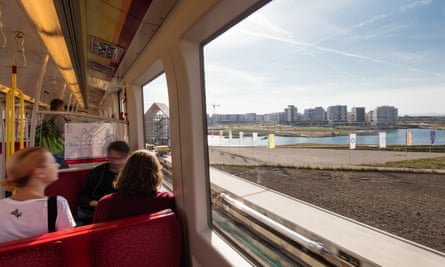
It is symbolic, yes, but makes a clear statement: Aspern specifically takes in to account women and their needs. In this way it embodies a unique approach to urban planning that began shaping Vienna 30 years ago.
“Gender mainstreaming” is the practice of ensuring women and men are accounted for equally in policy, legislation and resource allocation. Proposed in 1985, it was enshrined as the UN’s global strategy for gender equality in 1995, but Vienna had adopted it years earlier. The city has since conducted about 60 gender-sensitive pilot projects and assessed another 1,000.
Q&AWhen Europe gets it right
Show
As a series of crises puts Europe under strain, some cities are fighting back with innovative solutions. From hyper-specialist shops beating the online threat in Berlin to the Bulgarian city reversing the country's brain drain, from the Italian city finding new ways to tackle addiction to gambling to the Swedish town that has found innovative ways to combat extremism, we look at what European cities are doing to live better in our increasingly urban world.
As the city’s deputy mayor, Maria Vassilakou, wrote in 2013, gender mainstreaming ensures “fair shares in the city” for all by forcing planning to be approached from different perspectives. But how do pavement widths and bench design relate to gender? And if mainstreaming aims to promote equality, does Vienna’s example prove that it works?
“The argument is, you get a fairer society,” says Eva Kail of the city’s strategic planning unit. “As a public administration, to offer good service for the people – to have better quality of life – you have to take care of gender equality.”
Kail, one of the world’s pre-eminent experts in gender mainstreaming, was previously the head of Vienna’s first women’s office. Initially called the Frauenburo, the department was established after Kail, then a junior district planner, co-organised a photography exhibition in September 1991 that documented a day in the lives of eight different women and girls – from a young child, to a wheelchair user, to an active retiree.
It was a simple concept that showed a side to the city that was rarely considered. Like most European cities then and now, Vienna was being designed by male planners for men like them: going between home and work, by car or public transport, at mostly set times. There was no accounting for unpaid labour such as childcare or shopping, carried out mostly by women, in many short journeys on foot during the day.
Sabina Riss, an architect and lecturer at Vienna University of Technology’s Department of Housing, says this male-dominated thinking was evident in most large European cities after the second world war: “They designed cities like there would be no other people than men going to work in the morning and coming back in the evening – everything else in between, they kind of had no idea. And because they are the people who design cities, they are in charge.”
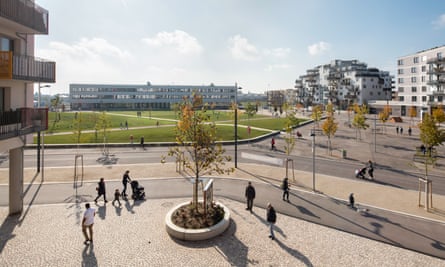
With no accounting for their movements, women were being left out of the city. Kail’s exhibition was a surprise hit, drawing 4,000 visitors and sparking public discussion of areas where women felt unsafe, how they got around, and – more broadly – who the city was for.
Later, a follow-up postal survey by the women’s organisation of the governing Social Democratic party led to a breakthrough revelation: roughly two-thirds of car journeys were made by men, while two-thirds of those on foot were by women. “That was really an ‘a-ha’ moment,” says Kail. For the first time, she was able to prove that men and women’s experiences of city living were different – and women’s were being overlooked entirely.
In April 1992, she was tasked with turning the momentum into concrete change as head of the Frauenburo, which Kail has called “a little bit of a feminist utopia”.
At that time Vienna was in a period of rapid expansion. The Iron Curtain had been swept aside, and the government had set a target of building 10,000 new apartments each year. Architecture firms were awarded contracts – but in 30-odd rounds, no women had even been invited to pitch. “Only men were defining the new structure of the city,” says Kail.
Her response was to invite only women architects – then just 6% of the profession – to submit proposals for a social housing project north of the city, with women’s everyday life an essential criterion of the design.
It was clear that Vienna’s future was in high-density housing; Kail saw this inaugural pilot as an opportunity to prove that taking gender into account resulted in better outcomes for everyone. “I always said we can’t have special conditions, it can’t be more expensive – we have to prove in the mainstream that we produce higher quality,” she says.
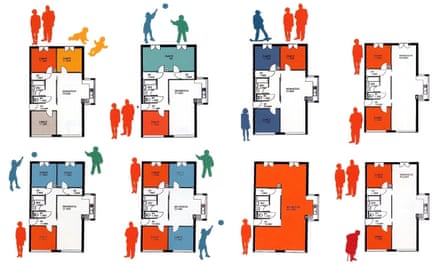
The result was Frauen-Werk-Stadt (Women-Work-City), a 357-unit complex made by women and completed in 1997. It was characterised by a woman’s perspective at every level: from pram storage on every floor and wide stairwells to encourage neighbourly interactions; to flexible flat layouts and high-quality secondary rooms; to the height of the building, low enough to ensure “eyes upon the street”.
“They tried to think it all through, from how you get off the bus to get into your flat,” says Riss.
The project was not without challenges. Some of the women brought on to the project were inexperienced, or did not hold feminist views: it was by no means only men who objected to gender mainstreaming in those early years.
There was also resistance within the public service. Though the project had the backing of those at the top of the administration, at lower levels there was sometimes openly sexist objection. There were many cases where department heads who had not been against gender mainstreaming in principle revealed themselves to be less amenable to having to apply it themselves.
Kail recalls being asked to moderate a cross-disciplinary working group for the traffic plan. “The first session was really horrible … [the men] didn’t accept me as leader of the game,” she says.
Over the decades, she developed an arsenal of approaches. Some colleagues were won over by the promise of media attention or internal recognition for their pioneering work in gender mainstreaming; others could be engaged intellectually by the opportunities to learn from this cutting-edge discipline. Kail got very good, she says, at buttonholing influential people during the coffee breaks of meetings.
Having shown it could be done with Frauen-Werk-Stadt, the next step was to gender-mainstream the city. Mariahilf, a densely populated central neighbourhood with about 28,000 residents, was designated as a pilot district.
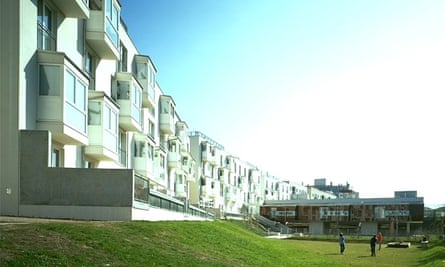
During 2002 to 2006, street lighting was improved in 26 areas identified in surveys as inducing anxiety; traffic lights were altered to prioritise pedestrians; and seating was installed in nine new locations. More than a kilometre of pavement was widened, and five areas were made entirely barrier-free, so as to better accommodate prams, wheelchair users and elderly people.
The link between wider pavements, benches and gender might be obscure, but Kail says it is a question of ensuring equality of opportunity and access. For example, for an elderly person, a well-placed bench might make the difference between participating in the city and remaining at home.
A neat example is the redesign of two parks in the Margareten district in July 1999 to encourage their use by girls, whose number was dropping off from the age of nine. The addition of volleyball and badminton facilities countered boys’ dominance over the caged basketball courts; those courts, meanwhile, were fitted with areas for groups of girls to sit, observe and chat. Improving lighting and footpaths added to their sense of security, encouraging them to linger.
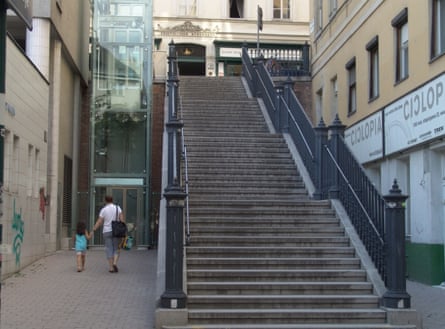
Four more parks were devised as pilot projects from 2000 and informed the gender-sensitivity guidelines applied to parks citywide since 2005. That process – of turning gender experts’ local knowledge into general guidelines for the whole municipality – has been described as ideal in terms of implementation of gender mainstreaming.
In the absence of measures to ensure different users’ needs are taken into account, only those of the dominant group are served. Kail notes that transport planners had thought to devise standards for car parks, but not ramps for bikes or prams, “because they thought it didn’t matter”. When the women’s office opened nearly 30 years ago, transport planners were exclusively “white, middle-class men,” she says – “and car drivers in the city looked like them”. When the city is viewed only as though through a windscreen, women feel the absence of measures to benefit pedestrians in a way that men typically do not. As Kail has put it: “if you want to do something for women, do something for pedestrians”.
“It is very political, what is regulated and what is neglected,” she says. Gender mainstreaming has been criticised as cementing traditional gender roles – for example, by equating childcare with women’s work – but she takes a pragmatic view. “You can’t influence the share of unpaid work by architecture, but you can support it. We would hope it would support 50% of men as well – but statistics show it is still more women doing that work.”
Similarly, she betrays an uncharacteristic trace of frustration at the suggestion that attempting to make women more safe by installing lighting absolves would-be attackers of responsibility. Lighting may not prevent sexual assault, she says, but it can alleviate women’s feelings of anxiety, improving their access to the city – and when they are faced with a potential threat, lighting improves their ability to assess the situation.
The line between feminist ideals of equality and practical steps to benefit the majority of women is one that gender mainstreaming sometimes straddles uneasily. Ursula Bauer, one of Kail’s first appointments, now heads the city’s cross-sectional gender mainstreaming department. “Our aim is to make sure that all the infrastructure and services of the city can be equally used by women and men … and contribute towards a more gender equal society.” Within the administration, it serves an intermediary role. “We try to translate feminist or gender equality to the departments who deal with the population,” says Bauer – but only, she and Kail agree, insofar as it is necessary to achieve their goal.

In the early years, Bauer and Kail agree that they leaned too much on feminist ideals to make the case for gender-sensitive planning. Eventually, they realised it was counterproductive to their primary goal: not to wave the flag for feminism, but to make women’s lives in Vienna easier and more equal.
Wolfgang Gerlich of the PlanSinn consultancy, which advised on the Aspern project, is sometimes called on to advocate for gender mainstreaming when a man’s voice is seen as more authoritative. He remembers hosting a workshop in the early 2000s that was attended by a German feminist planning expert and men from the city’s construction department.
“It was a glorious, very valuable failure,” he says. “There was no effect except irritation. Then we completely changed the strategy.” One of the techniques in this new inclusive approach was to ask sceptics to think of what they’d wish for their daughter or niece, says Gerlich, “as a means of creating empathy and making it personal”. Another tool is “the four-R method”, asking “Who gets what and why, or why not?” to raise awareness of representation, resources, reality and rights.
Gerlich says there is a segment of the Viennese population – mostly men who drive cars – who resent gender mainstreaming because they are fearful of loss: of quality of life in the city, but also of power. “Of course they are not happy,” he says.
But any rumble of backlash against gender mainstreaming has struggled to gain traction when the message from the city’s highest offices has been one of unwavering support. Statements and symbols have helped to make that clear, such as the introduction of gender-sensitive language and titles to its corporate branding and, on the underground train network, posters to raise awareness of vulnerable passengers that represent men and women equally.
Today gender mainstreaming principles are enshrined in policy, with sanctions for those who do not comply. “Gender budgeting”, for example, introduced in 2005, requires each department to report twice a year on how their expenditure has benefited men and women equally. New housing projects must meet gender sensitivity criteria to be subsidised – a sort of checklist to ensure that mainstreaming is not dependent on individual interest.
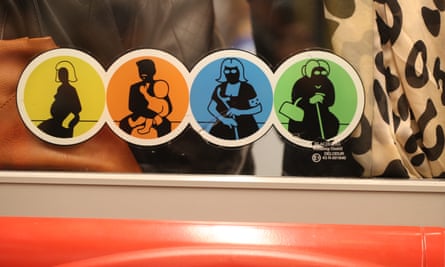
This, Kail has written, is a greater achievement than she could ever have imagined back in 1991. After 26 years, it is now fairly common practice in Vienna to approach city living through a gender lens – and in 2008, the UN Human Settlements programme recognised Vienna’s urban planning strategy as best practice.
It is striking that other cities are only lately looking to follow in its example, with Berlin, Barcelona and Copenhagen all beginning to incorporate gender mainstreaming into their urban design. In 2013 Stockholm began implementing gender-sensitive snow clearing, where the routes most used by women – such as footpaths around daycare centres – were cleared earlier in the day. But the fact that the policy was subsequently blamed for long delays (apparently without grounds) shows just how much scepticism there is about strategies to achieve gender equality – or even the need for them at all.
But the more imminent threat to the city’s housing standards is growth. Vienna needs 130,000 new residential units by 2025, and stretched public resources could force compromises in quality, gender sensitivity among them.
“I think it’s already in process,” says Riss. New private developments far short of the high standard set for social housing, she says. “They sell flats with really bad floor plans, they don’t care about stairwells that have daylight or communication between neighbours. All of these achievements that have been implemented – they don’t apply any more.”
Gender must also now compete with other, sometimes conflicting, concerns – climate resilience, migration, the better-access lobby – for resources and attention. But after nearly 30 years, gender mainstreaming is nearly procedural, almost embedded in the municipality mentality. Aspern doesn’t feel like a “feminist utopia”, as Kail once described the women’s office. Rather, it comes across – in its cohesion, sense of established community and lively public spaces – as simply a very well-designed neighbourhood. Therein lies the importance of gender mainstreaming, says Kail, as well as the difficulty in arguing its case: “If it didn’t happen, we would feel it. But as long as it happens, we don’t see it.
“If they’ve really accepted it, it becomes invisible.”
Follow Guardian Cities on Twitter, Facebook and Instagram to join the discussion, catch up on our best stories or sign up for our weekly newsletter
